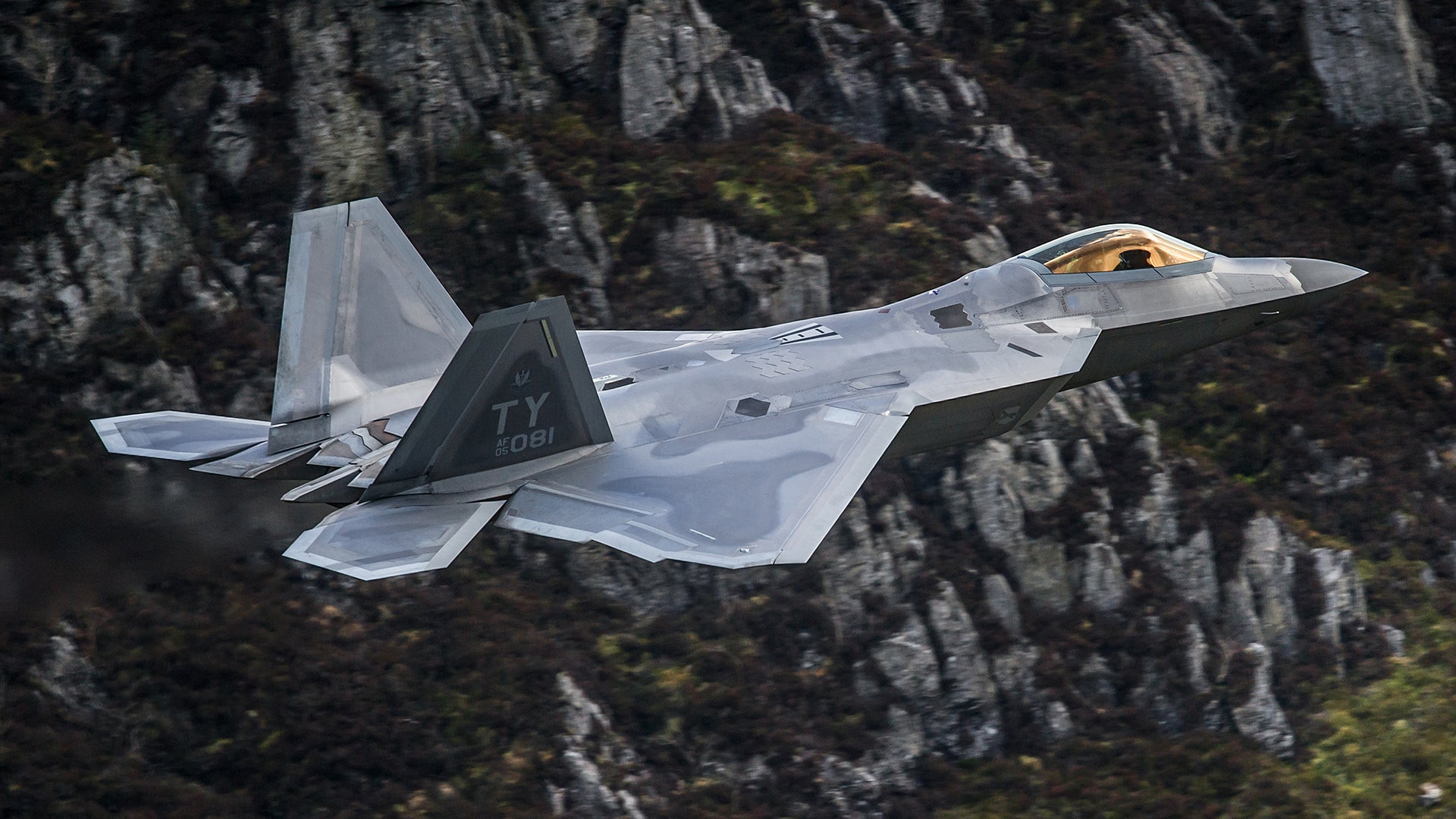Two major things happened in the UK during late April that raised military aficionados’ eyebrows and caught aviation observers with their pants down. The first saw the US Air Force deploy twelve of the world’s most advanced super fighters across the Atlantic without any warning. It just happened. A mass of F-22A Raptors left Tyndall AFB in Florida and headed for England on a deployment that would last nearly three weeks. And no one outside the ‘need to know’ military network had a heads up about it. It proved that such things can still be done without losing the element of surprise, a point that is extra significant when you consider that the UK has an entire community built around aircraft spotting and flight tracking.
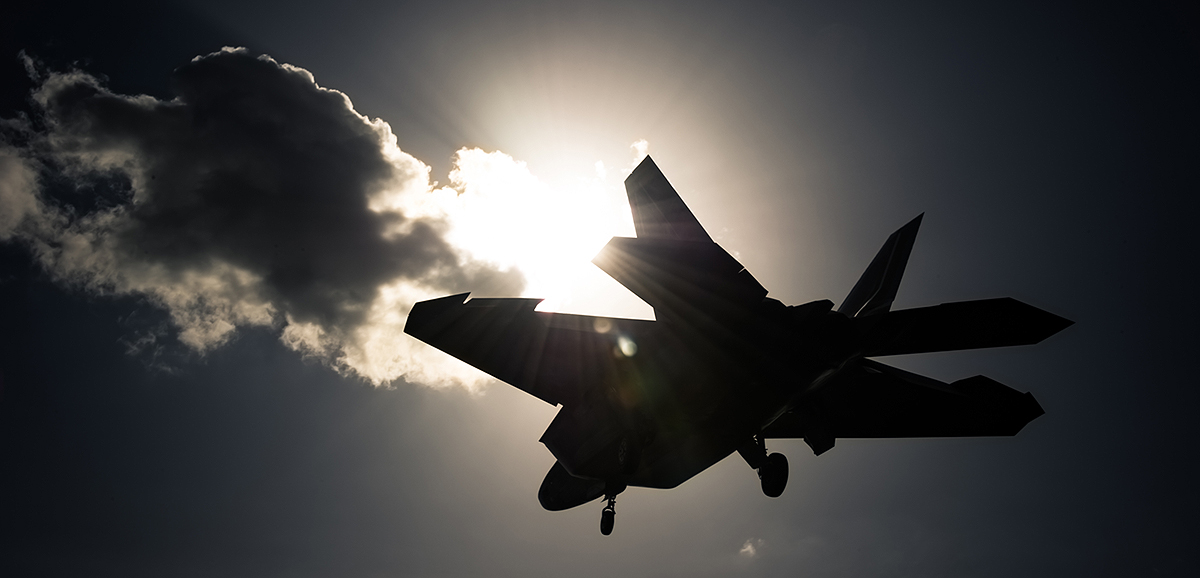
The second was as incredible as the first and saw a program first for this silver-clad 5th Generation fighter. Two of the super-cruising, thrust-vectoring, stealth-optimized, air dominance jets undertook a dedicated low-level mission through the UK’s famous Low-Fly system, the silver angels dropping down from the heavens, weaving and glinting their way through the green valleys of Wales.

The US Air Force deployed 12 F-22A Raptors from the 95th Fight Squadron ‘Boneheads’, their motto ‘Death with Finesse,’ and approximately 220 airmen and associated equipment to RAF Lakenheath, UK, to undertake a period of intense training with European-based aircraft. The Raptors swept into Europe on April 11, 2016, arriving in two waves over two days, and remained deployed until May 9th, 2016, with the final four jets leaving on May 10th. This was the largest F-22 deployment to Europe to date and is part of the unit’s training plan to support Global Response Force contingency operations.

During their time in the European theater, the airmen and aircraft participated in exercise ‘Iron Hand’ and also forward deployed in small numbers from the UK to other NATO bases. There they executed cooperative training with their host nations, demonstrated America’s commitment to their NATO allies, and deterring any actions that could destabilize regional security. Without a doubt, putting F-22s on Russia’s front doorstep definately sends a strong message to Moscow.
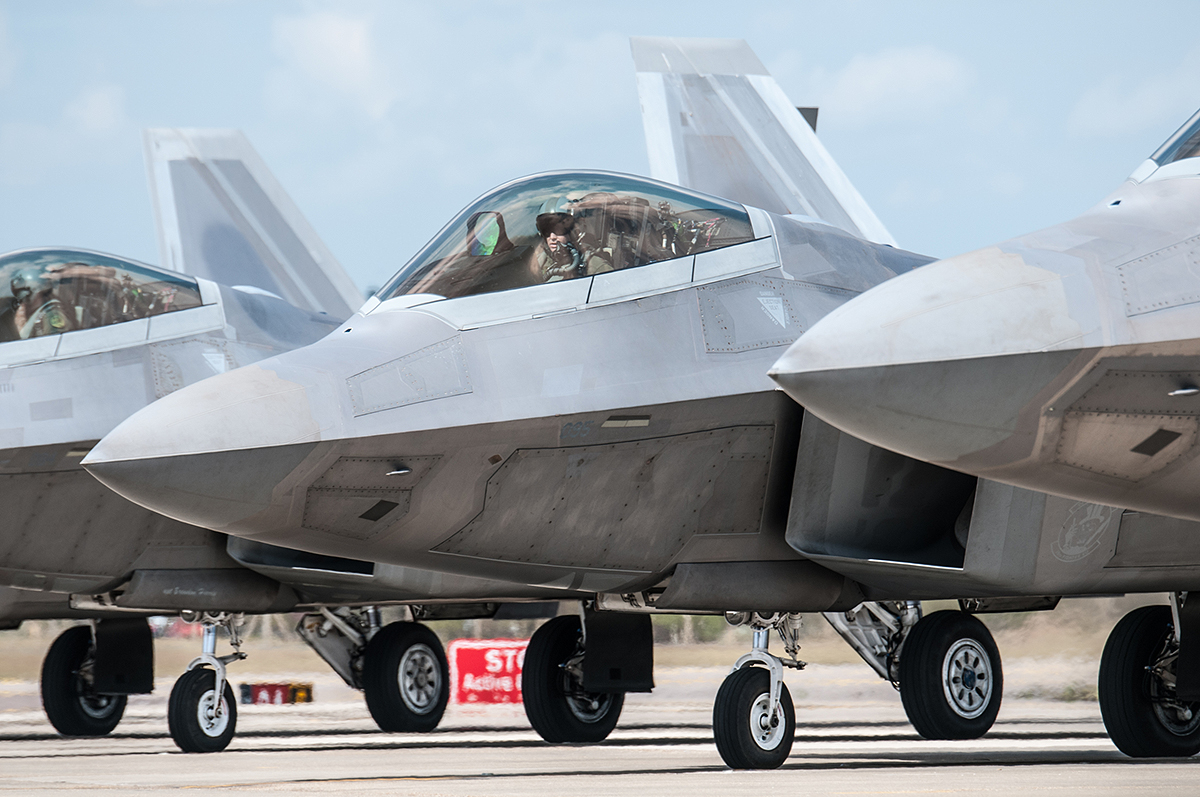
The Global Response Force (GRF) is a joint military team that stands ready for tasking by the US Secretary of Defense to respond to crisis situations. Akin to a Department of Defense 911 emergency force, the GRF provides a menu of tailorable and rapidly deployable forces to respond quickly to a range of worldwide contingencies. Units are assigned on a rotational basis and conduct high-tempo training to be prepared for GRF mission. This F-22 deployment exercised the GRF capability and the ‘Rapid Raptor’ concept to quickly deploy America’s only combat-proven 5th Generation fighter on a moment’s notice to anywhere in the world.

One F-22 pilot noted that, whilst the transit to the UK was routine, there was a chance to get stuck into the ‘Rapid Raptor’ philosophy right off the bat:
“This was the first time a four-ship of clean (no tanks) F-22s made the transit across the Atlantic (circa nine hours) and joined the fight. We undertook the ‘pond hop’, then departed the tanker over northern UK and rejoined with other assets (F-15E Strike Eagles from RAF Lakenheath) and conducted a training sortie. After landing, maintenance rapidly prepared our Raptors for another sortie and the jets took off again a few hours later, demonstrating another capability of the ‘Rapid Raptor’ concept. The training mission consisted of multiple advanced air-to-air and surface-to-air threats. During the mission, the F-22s dropped simulated ordnance and integrated with local assets stationed in the UK.”
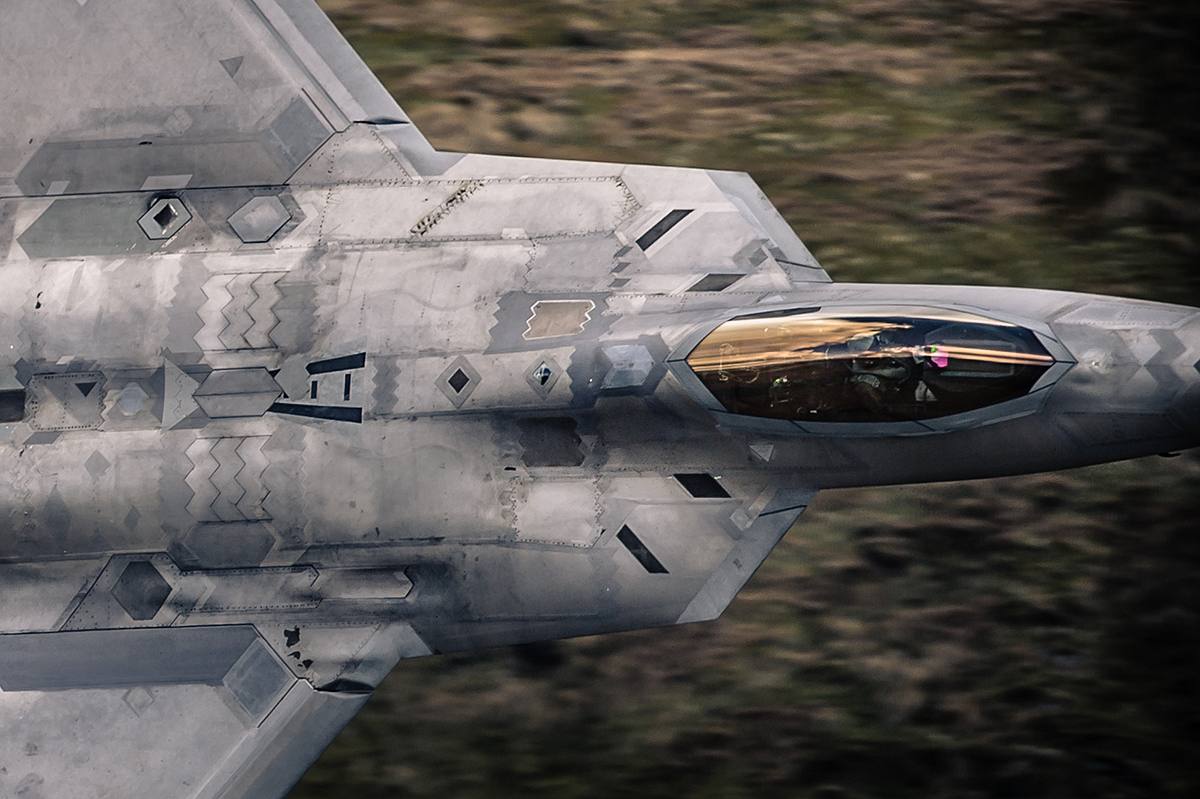
Unsurprisingly, the ‘Boneheads’ were tight lipped about the way in which the deployment was kept so tightly under wraps, although one spokesman for the 48th FW stated “It just proves we can do it. When we need to, we can still do anything.” It was also understood that the whole ethos of the deployment was to keep it under wraps even from the crews themselves, with just a handful of key personnel knowing the full plan before it was executed. The unit as a whole only had 72 hours notice before deploying.

Whilst in Europe, the 95th FS conducted air training with varied European-based assets. The F-22s forward deployed from the UK to Romania, who’s MiG-21 LanceRs provided quite the technological contrast to the ultra high-tech F-22s. A small contingent of F-22s also deployed to Lithuania. The Raptors also participated in the commemoration of the 100th Anniversary of the Lafayette Escadrille in Paris, France, providing a dramatic four-ship flyover.

Beyond these smaller sub-deployments, the F-22’s primary operations were undertaken with the busy assets of the 48th Fighter Wing, known better by its nickname ‘The Liberty Wing.’ The 48th FW’s fleet includes F-15Cs of the 493rd FS ‘Grim Reapers’ and F-15E Strike Eagles of the 492nd FS ‘Bolars’ and 494th FS ‘Panthers.’ There were around 16 sorties flown per day, broken down into two ‘goes,’ although sometimes the base would see upwards of 90 sorties launched due to some stunning British weather. All these missions were executed under the ‘Iron Hand’ moniker and flown with such callsigns as ‘Warman’, ‘Mugger’ and ‘Bones.’

A Raptor pilot explained how the various types of aircraft worked together: “Fighter Integration (FI) tactics focuses on the synergistic effects that can be harvested by successfully playing to each fighter type’s strengths, while avoiding, as a package, individual aircraft type’s potential weaknesses. As an example, during an Offensive Counter-Air focused training mission, the F-15Cs integrated with F-22s to gain air dominance against an advanced air-to-air fighter threat, allowing the F-15Es to roam freely across the battlespace and further integrate with F-22s to find, fix, target, track, engage and assess both medium and long-range Surface-to-Air Missile (SAM) sites in a contested Integrated Air Defense System (IADS) environment.” Hot stuff!
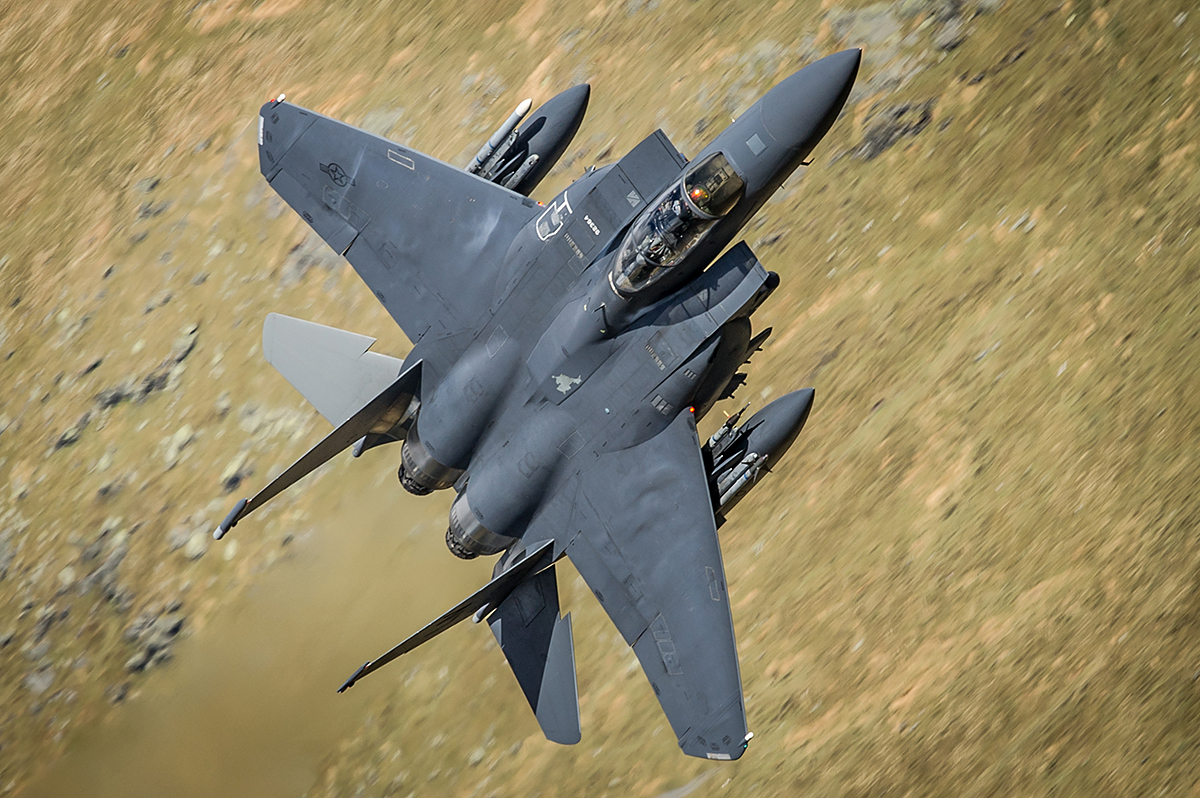
“While flying the F-22 is no different here than anywhere else in the world, the uniqueness of fighter integration with our NATO allies is what provided the greatest training value” explained a ‘Bonehead’ on deployment. “The crosstalk that happens across multi-national aircrews throughout the brief, execution, and debrief provides the bulk of the lessons learned which are invaluable to our future coalition operations.”

The Royal Air Force was also keen to get in the mix. “Having just successfully completed Exercise ‘Red Flag’ at Nellis AFB in Nevada by integrating with RAF Typhoons, we looked forward to again testing our interoperability and mission planning processes. We flew a variety of offensive and defensive counter-air missions with RAF Typhoons and Tornados, relying on them in differing capacities as dictated by the tactical scenario. Each time we test our current Tactics, Training and Procedures (TTPs) we walk away with newer and better lessons learned that only serve to increase our joint lethality in future engagements.”
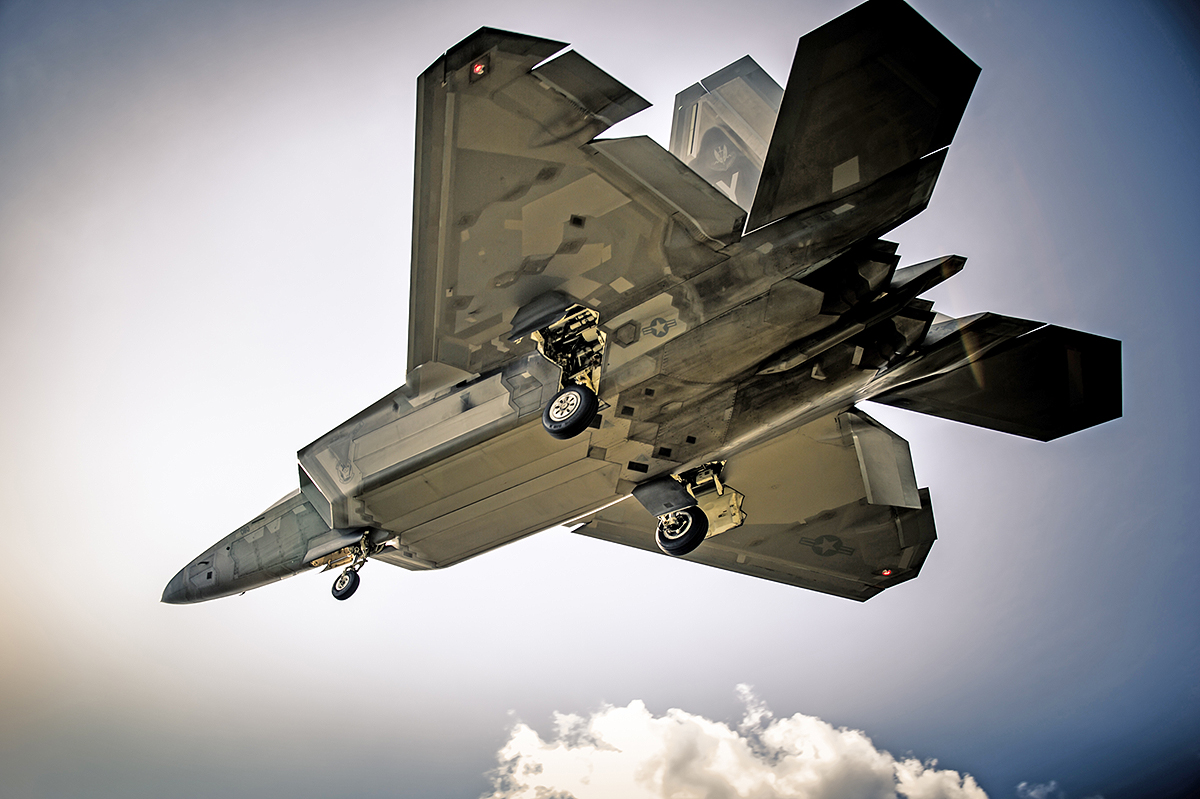
So what about that flight? The one where the Raptors dropped down from their air dominance perch, swapping high-altitude swooping turns and supercruise for low-level jinking and the skirting of cliff-tops?
Aviation history was made on Tuesday, April 26th when these words were transmitted by Colonel Novotny, Commander of the 48th FW, who was operating as ‘Rage 21’ in the flight: “We are a mixed formation of two Fox One Five Echos, two Fox Twenty Twos and one Fox One Five Charlie, entering Low Fly Area Seven north to south for 20 minutes.” ‘Rage 21-22’ were followed by ‘Mongol Flight’ and then ‘Sweep’, with clearance given for the group of fighters to fly down to 500 feet above the ground.

“All F-22 pilots maintain a low-level currency (down to 500ft AGL)” explained one Raptor pilot, “and this requires periodic flights at that altitude. Although the 95th FS typically operates over the water due to over-land supersonic restrictions, it’s also an important basic fighter pilot skill to safely operate at low level. This low-level mission highlighted the differences required in intercept geometry, the increased performance of the F-22, and the dangers associated with low-level flying while experiencing such high G onset rates, sustained G loads and decreased time-to-impact… Although we cannot get into details of what a typical mission consists of, Raptor pilots must be comfortable operating at the full flight envelope available to them. Whether its 60,000ft or 500 feet, the pilot must be comfortable with his environment and should be ready to take advantage of any opportunity that may present itself during a mission.”
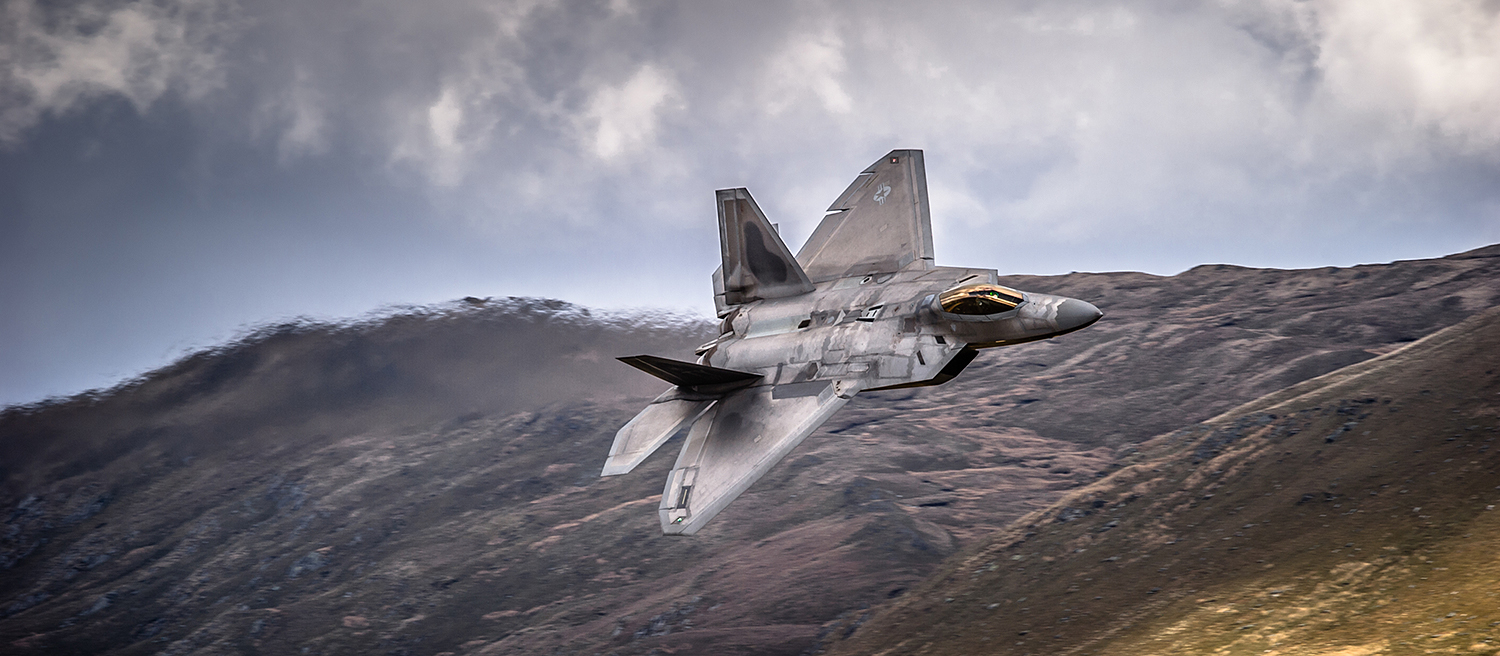
The jets themselves took on an almost computer graphic-like appearance as the light danced off their futuristic fuselages. They dived in from Lake Bala and entered the valley towards the Cadair Idris peak, the jets could be seen to undertake hard jinks while making their way down-low. “Any fighter pilot knows that maneuvering in relation to the bandit is essential to survival,” explained one of the two pilots. “In this case the highest threat ‘bandit’ is the ground. The US Air Force has a multitude of instructions, regulations, and training rules that are in place to keep us safe, especially in the low altitude environment. As you can imagine, the speeds and altitudes at which we fly may require ‘aggressive’ turns, within our maneuver limitations, to stay on route and ensure terrain clearance.”

It was also understood that the Raptor’s performance in the demanding low-level regime was impressive. “The integrated digital flight control system on the F-22 constantly attempts to maintain the same handling characteristics regardless of airspeed and altitude, relying on both the combined 70,000 pounds of thrust from the Pratt & Whitney engines and thrust vectoring.” The hard maneuvering on approach to the valley (considered to have been 9g on some passes) was of note and was understood to have been necessary just to slow the speed-hungry, uber-responsive Raptors down.
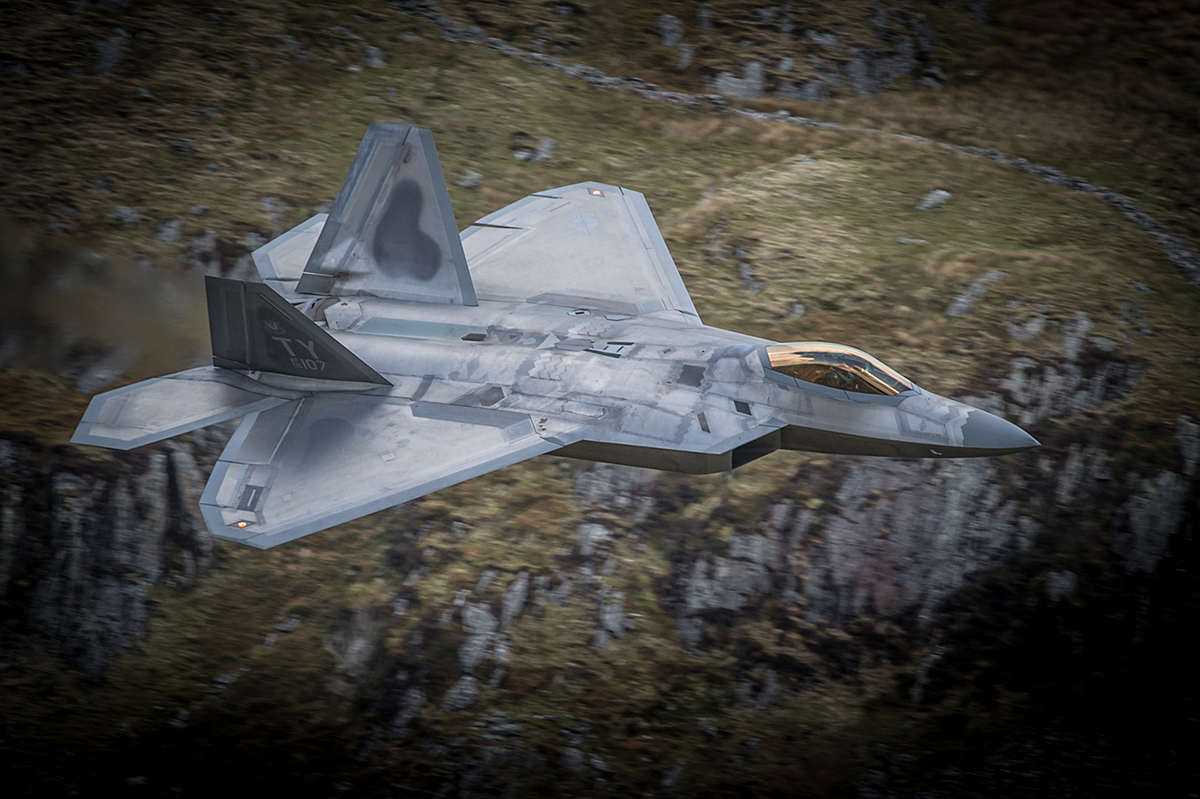
“Flying the Mach Loop was a unique opportunity to hone our low-level proficiency in mountainous terrain, which is something we don’t have the capability to train to at our home station in Florida. Many pilots in the 95th FS have previous experience operating on the ranges in the Western US and Alaska, which are quite similar to the ranges in Wales.” Flying a Raptor through the Mach Loop is no different than any other fast jet in the low-level arena. It required significant mission planning and a spot-on crosscheck to mitigate the inherent risks of tactical maneuvering close to the ground.

“A significant level of mission planning went into it” the second pilot agreed. “This began with a thorough review of UK Low Fly and local procedures to include route abort procedures, bird avoidance, and en-route weather considerations. The bulk of the mission planning day was spent building the low-level route, map construction included NOTAMS and bird/noise avoidance areas, and fuel planning. The mission brief involved all participants (in the low level sortie) and covered the entirety of mission in significant detail, including a computer generated ‘live fly’ of the route and a hefty discussion on contingencies. As a result of the mission planning process and leveraging the experience of our local experts, the execution of the mission went off without a hitch.”
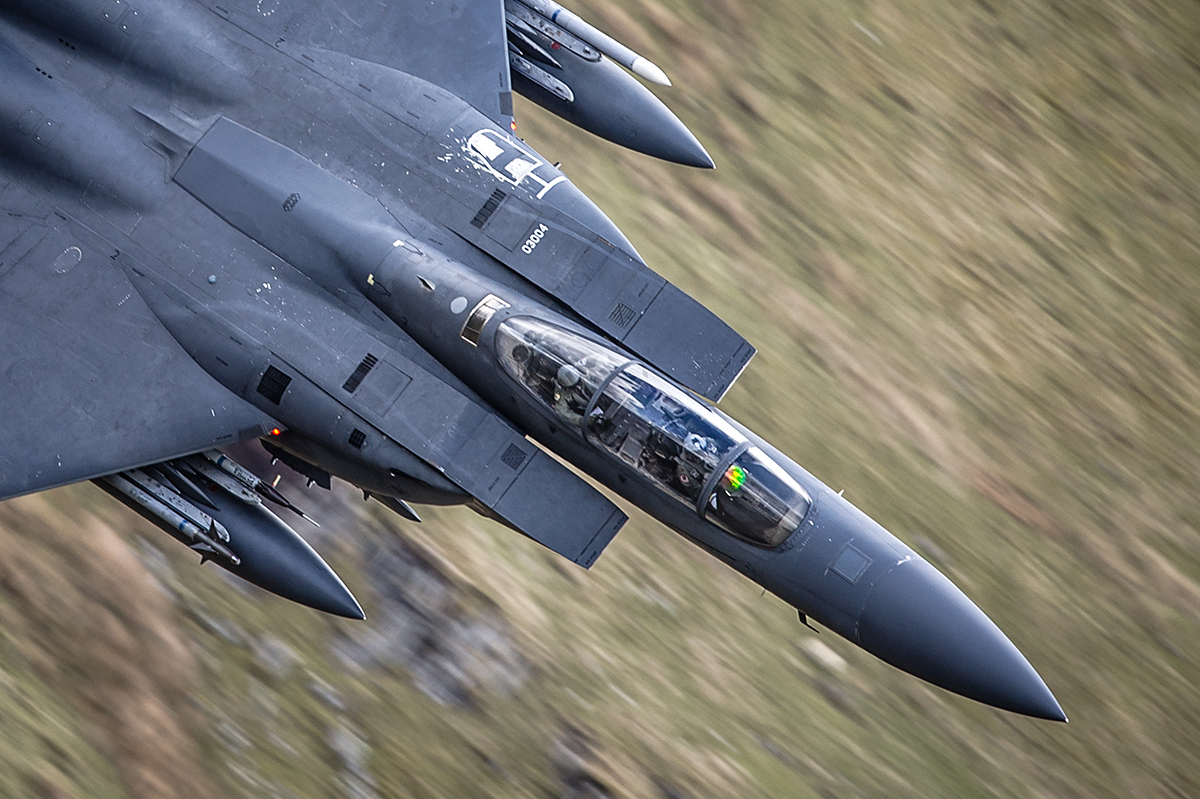
In Colonel Robert Novotny, the 48th FW has a Commander unlike many others. A true leader with a panache for Facebook, it fell to him to surmise this exciting deployment: “The F-22 deployment to RAF Lakenheath makes perfect sense. Lakenheath is the home of combat fighter aviation in Europe. It’s the place where we work with our NATO allies to sharpen our tactical skills and reaffirm to our commitment to the alliance. Deploying Raptors here and integrating with our efforts in these areas has been a phenomenal success.”

“During their deployment, we were able to integrate seamlessly into some of the largest fighter exercises in Europe. They trained with US, UK and other NATO forces in high-end fighter combat against robust air defenses and modern threats. Additionally, we were able to codify the lessons we learned to ensure future deployments can be faster, simpler and even more lethal if necessary.”
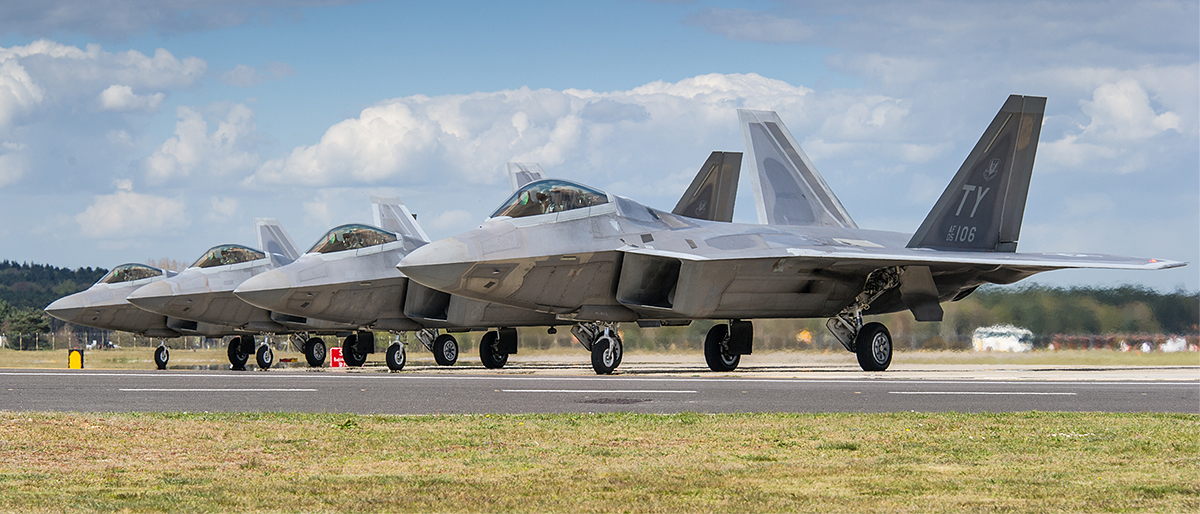
“Sending the Raptors into Low Fly Area 7 was an opportunity for their low-altitude qualified pilots to see first-hand, the amazing training opportunities we have in the United Kingdom. The training ranges and low flying airspace here are some of the best in the world. That fact that the UK is an aviation-minded nation, like the US, with aviation enthusiasts who captured our training in LFA 7 was a real bonus.’
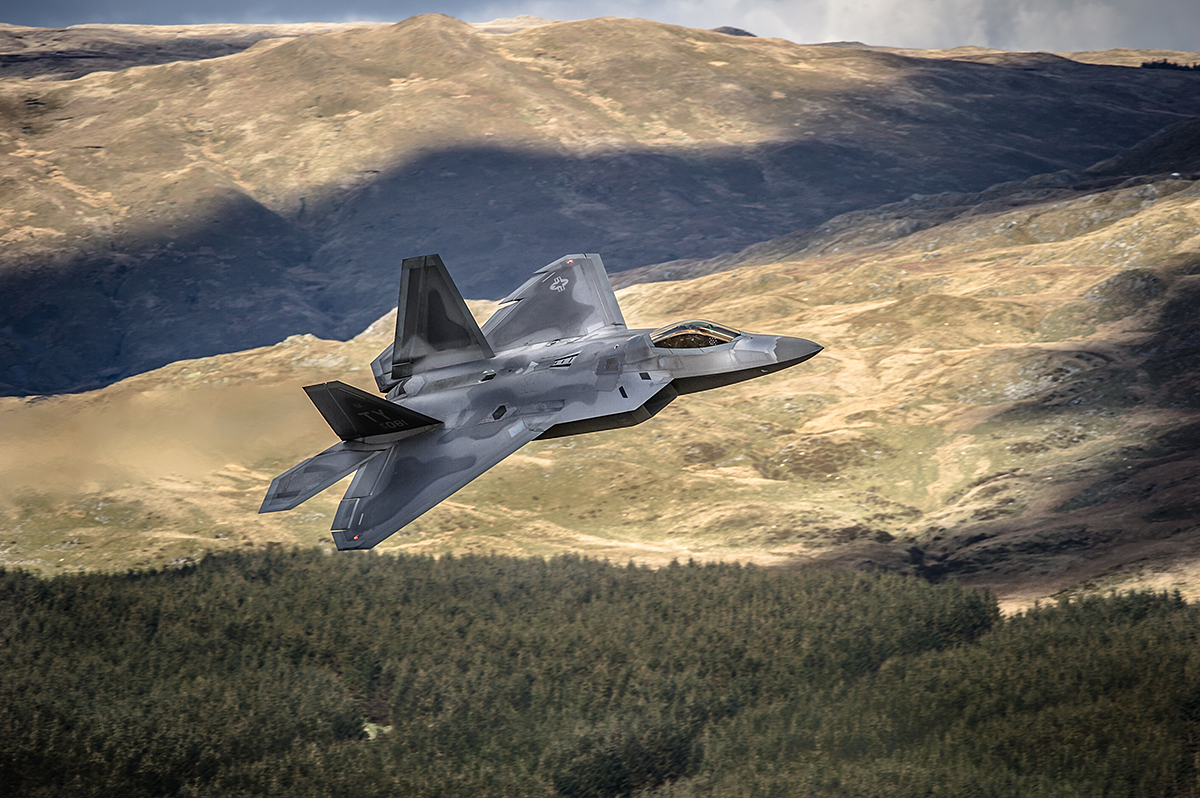
The final four-ship of F-22s screamed into the skies over Suffolk on the morning of May 10th, heading for home at the end of an unforgettable deployment, undertaken with the finest ‘fighter finesse.’
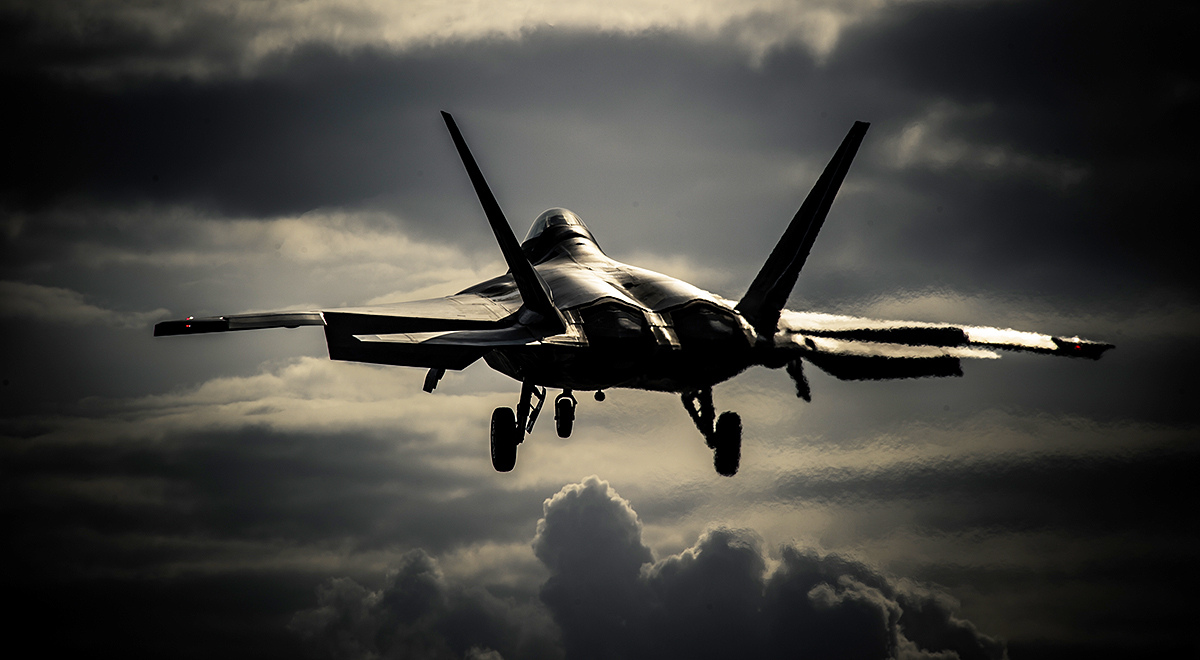
Rich Cooper runs the Centre Of Aviation Photography make sure to check them out here and to follow him on Facebook here.
